I dropped by New Geographies on its opening night, Tuesday, October 7th, at THE TAGLI — the space was buzzing. The group show gathers artists Lucas Dupuy, Thomas Cameron, Leon Scott-Engel, Piers Alsop, Harm Gerdes, Nassim L’Ghoul, Tom Woolner, Toni de Jesus, and Afonso Rocha, mapping out new visual and material terrains. The exhibition runs from 7–19 October 2024.
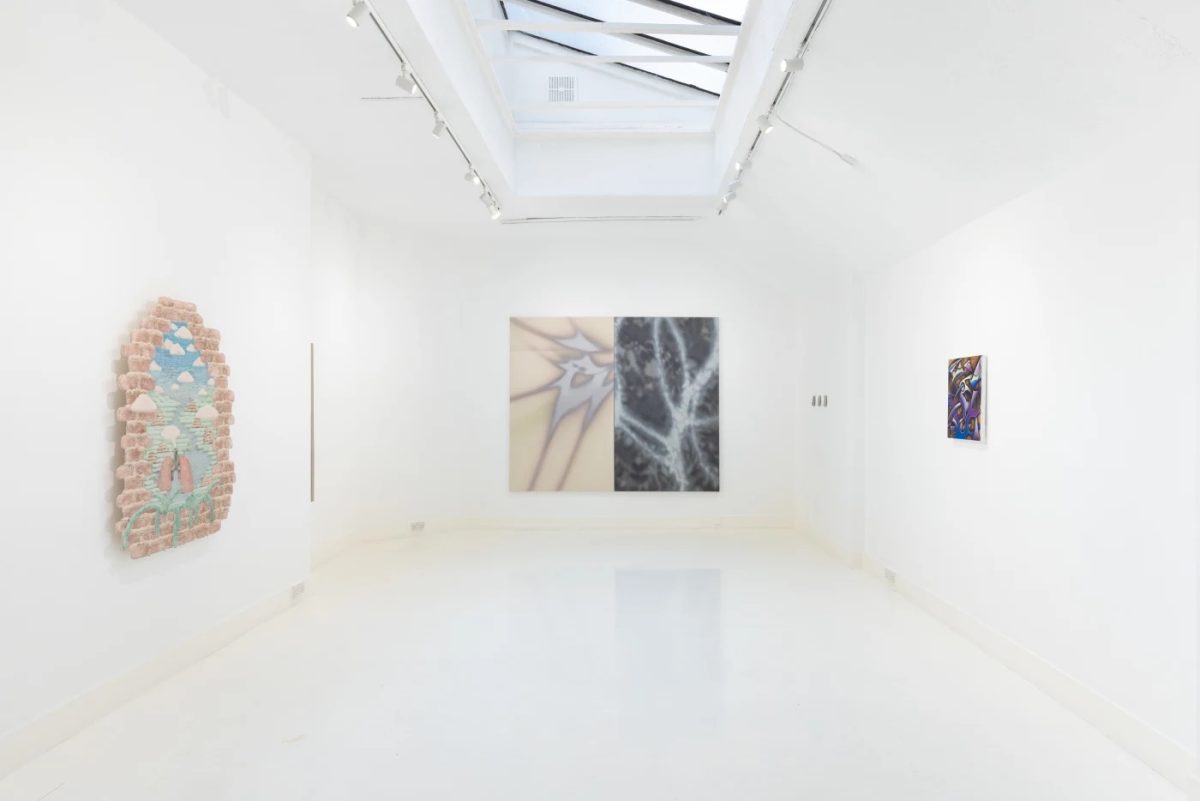
The exhibition space is divided into two levels, forming a bi-layered spatial loop that moves from the outside inward and back outward again. The ground floor opens with a focus on perception and the field of the tangible: Lucas Dupuy’s abstract works derive from the visualisation of sound data, exploring the transformation between auditory experience and spatial structure. Following this, Thomas Cameron’s works focus on anonymous figures in everyday environments. Through his depictions of street corners, shop windows, and waiting areas, Cameron reveals the interchangeability of individual experience within the contemporary urban landscape.
“My aim is to present the understated, fleeting moments in urban life – often that which is overlooked due to its over-familiarity.”
Thomas Cameron
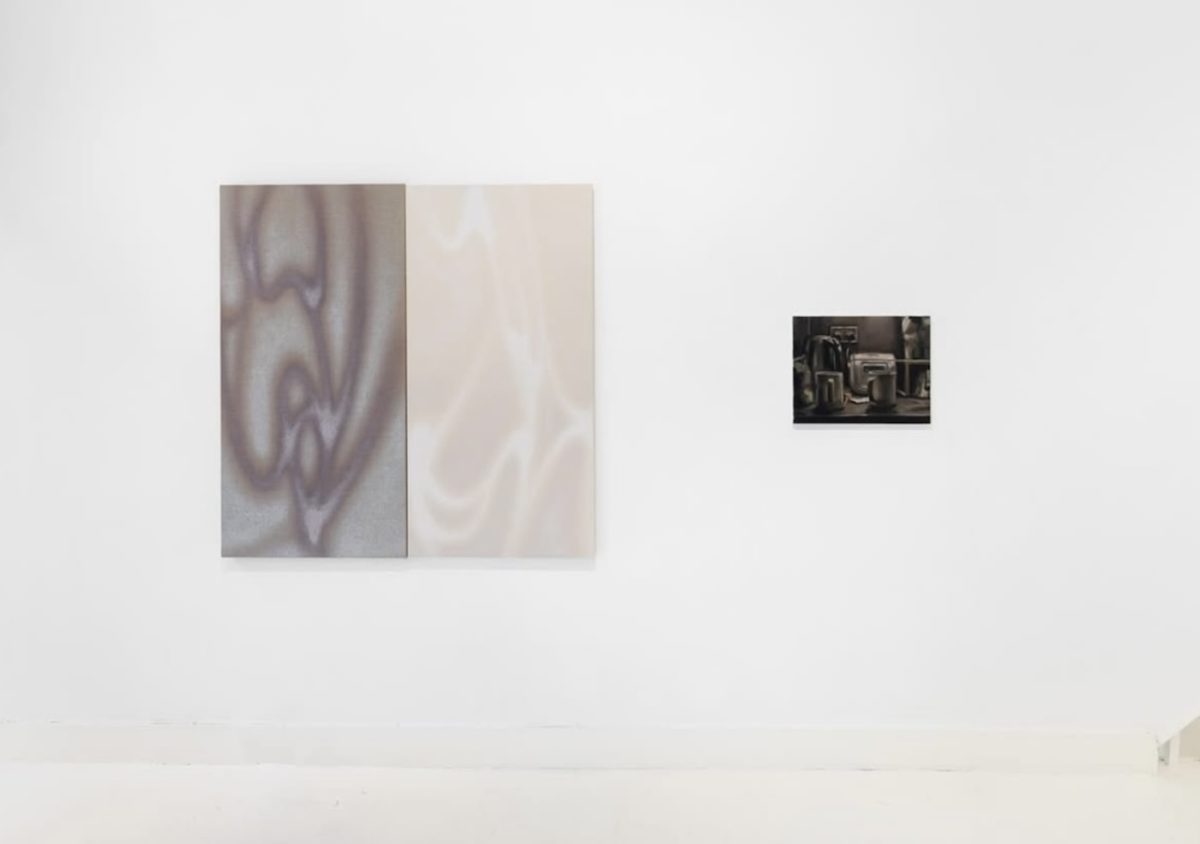
Upon entering, the ordinary details of daily life that are often overlooked are amplified. Sound becomes another dimension, made visible; neglected scenes acquire their own personalities. Kettles, coffee cups, and toasters seem to come alive. Everything surrounding us, all the easily ignored fragments of existence, reappear vividly on the canvas. At the very entrance, New Geographies performs its first act of “cleansing” upon us.

Opposite it, Leon Scott-Engel’s painting, enclosed within a curved frame, portrays a figure deep in contemplation, one seemingly insulated from the surrounding environment, retreating instead into an inner world. At this moment, geography shifts toward the realm of perception: from outward observation to inward introspection, where every minute detail of the external world becomes magnified. The curved frame raises a question: can a person be shaped by their environment, or do they maintain a psychological boundary within it? The gap between the inner and the outer thus forms a layer of psychogeography.

Moving further inward, Piers Alsop re-examines the boundary between the urban and the private. Through deliberate pauses, blank spaces, and restrained composition, his images transform physical sites into psychological spaces. This resonates with Leon Scott-Engel’s contemplative figure within the curved frame, suggesting that “geography” is also a construction of memory. The contrast between the two articulates the exhibition’s gradual transition from external space toward internal consciousness.

In the latter part of this floor, the figure in Cameron’s street scene gazes leftward and guides the viewer toward the next layer of geography. Harm Gerdes and Nassim L’Ghoul extend the discussion of geography into the realm of media itself. Gerdes’s works seem to amplify a certain kind of perception, an invisible yet ever-present energy. Through a painterly language of digital luminosity, he simulates data interfaces and transforms the landscape into an image re-coded by algorithms and pixels. L’Ghoul’s metallic reliefs, by contrast, are derived from urban detritus and fragments of the street. Through processes of recasting and reconfiguration, these overlooked material traces are transfigured into formal monuments.
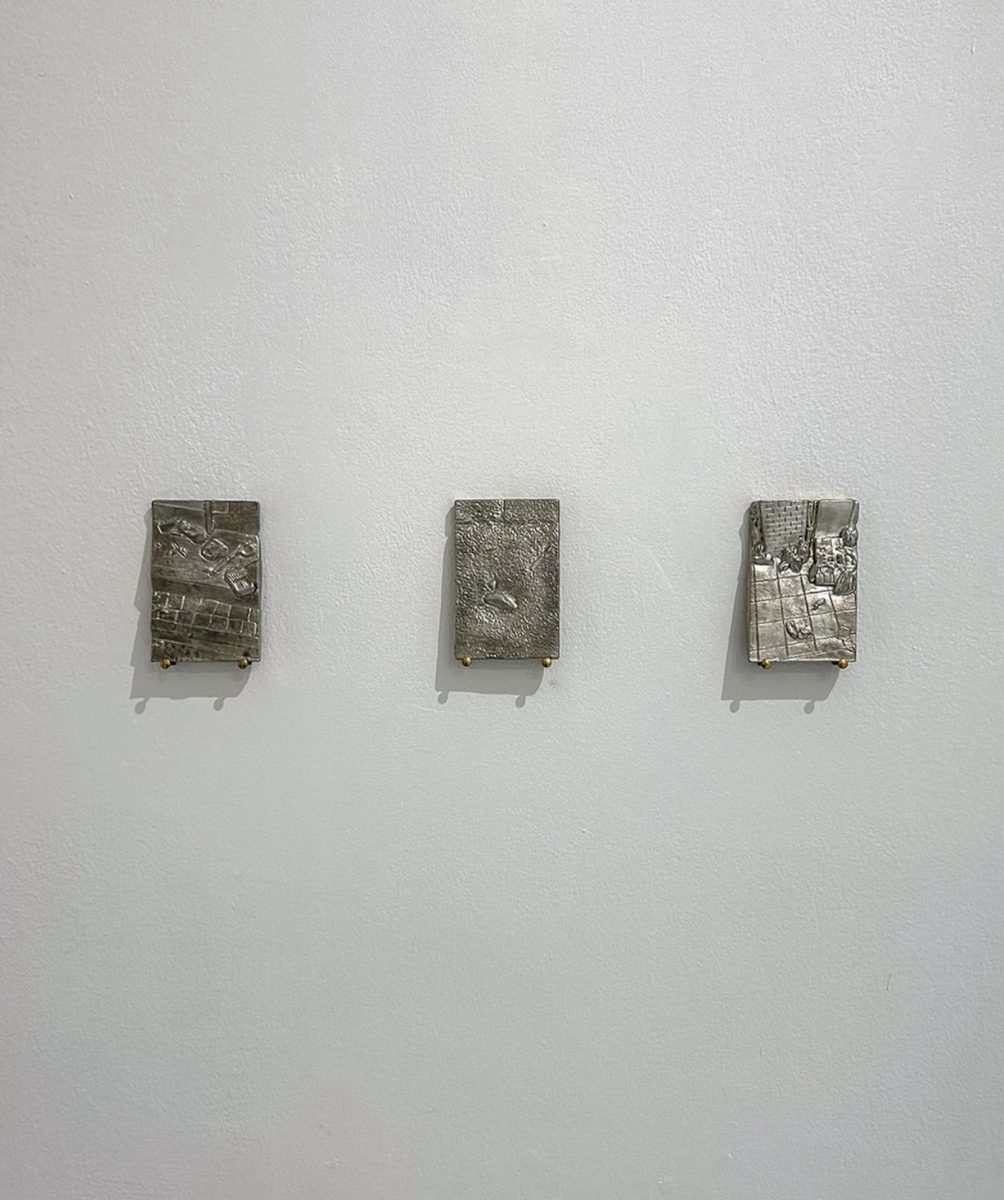
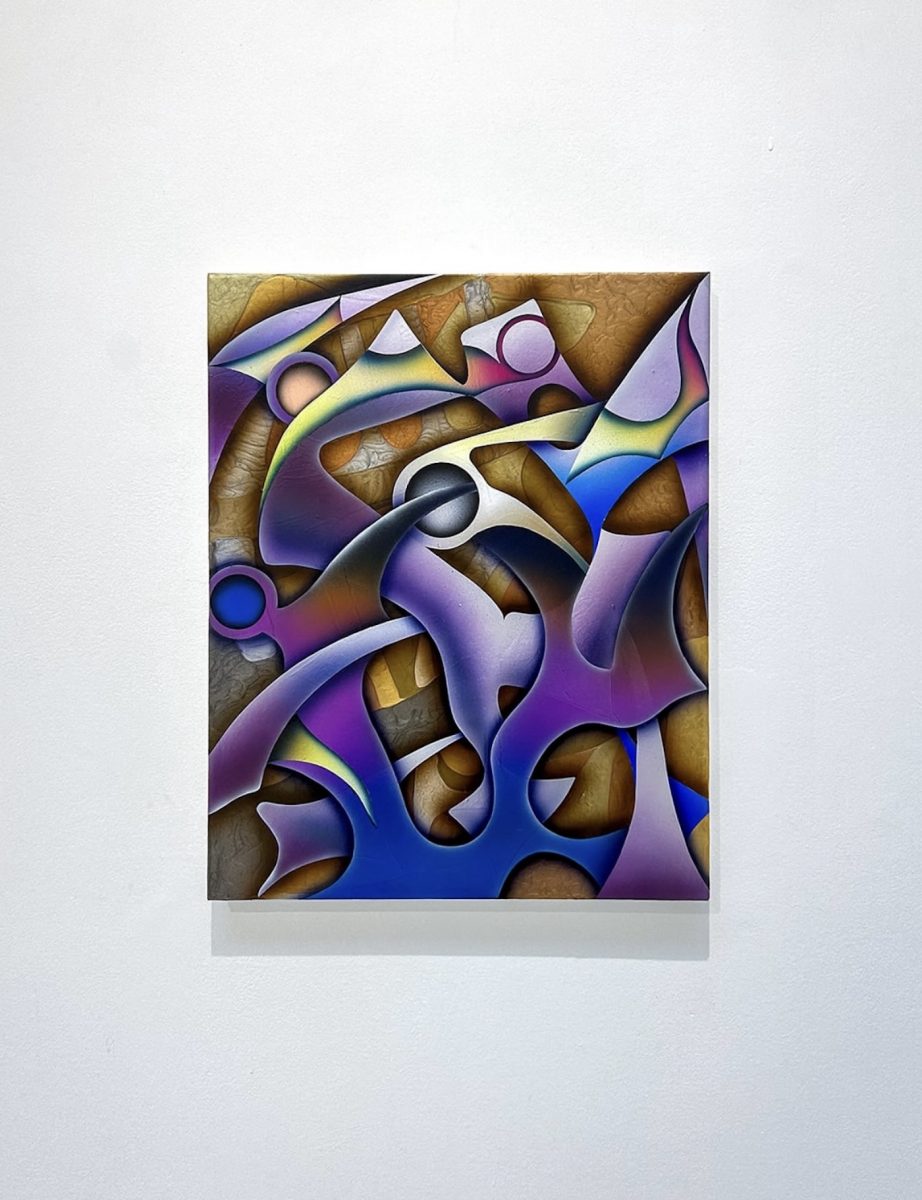
Together, their works point to another dimension of geography, moving from the inner digital and luminous models of perception to the outer everyday scenes turned into sculptural reliefs. This transformation between energy and matter, immaterial and tangible, also echoes the exhibition’s opening gestures with Lucas Dupuy’s visualization of sound and Leon Scott-Engel’s curved composition and handcrafted wooden frame, which align with the architecture’s angles and walls and emphasize how bodily scale shapes our perception of space.
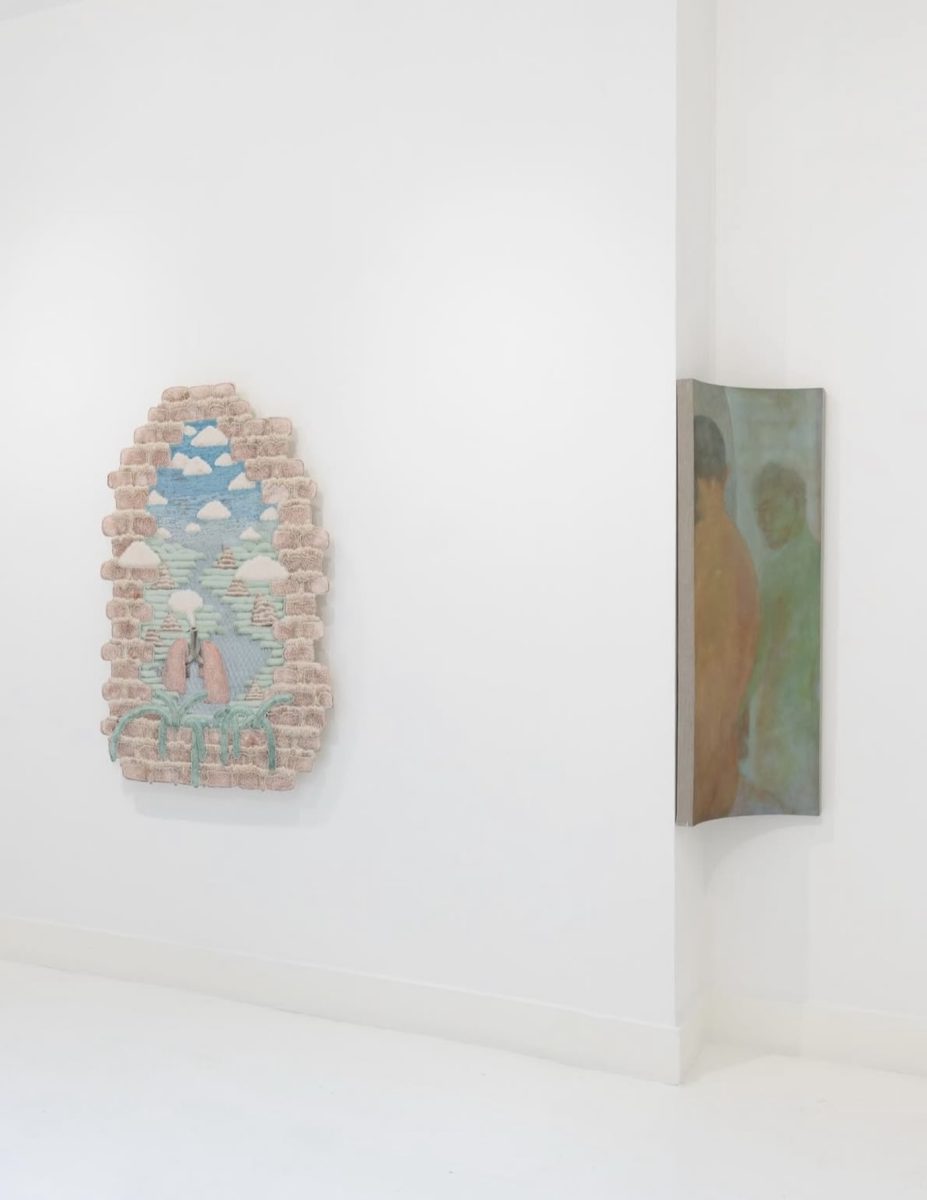
Along the return path, the exhibition gradually enters the dimension of the body and materiality. Tom Woolner’s resin and silicone reliefs exist between painting and sculpture. The movement of flow and solidification creates structures that resemble geological strata or organic tissues. Lungs exhale clouds like factories; within the clouds, the faint outlines of a brain emerge. Bronchial tubes entwine like vines, while the brain and intestines together construct a brick-like wall beyond an imagined utopia. These forms gesture toward a metaphorical relationship between the body and geology, rendering once again a tangible geography of the body and its environment.
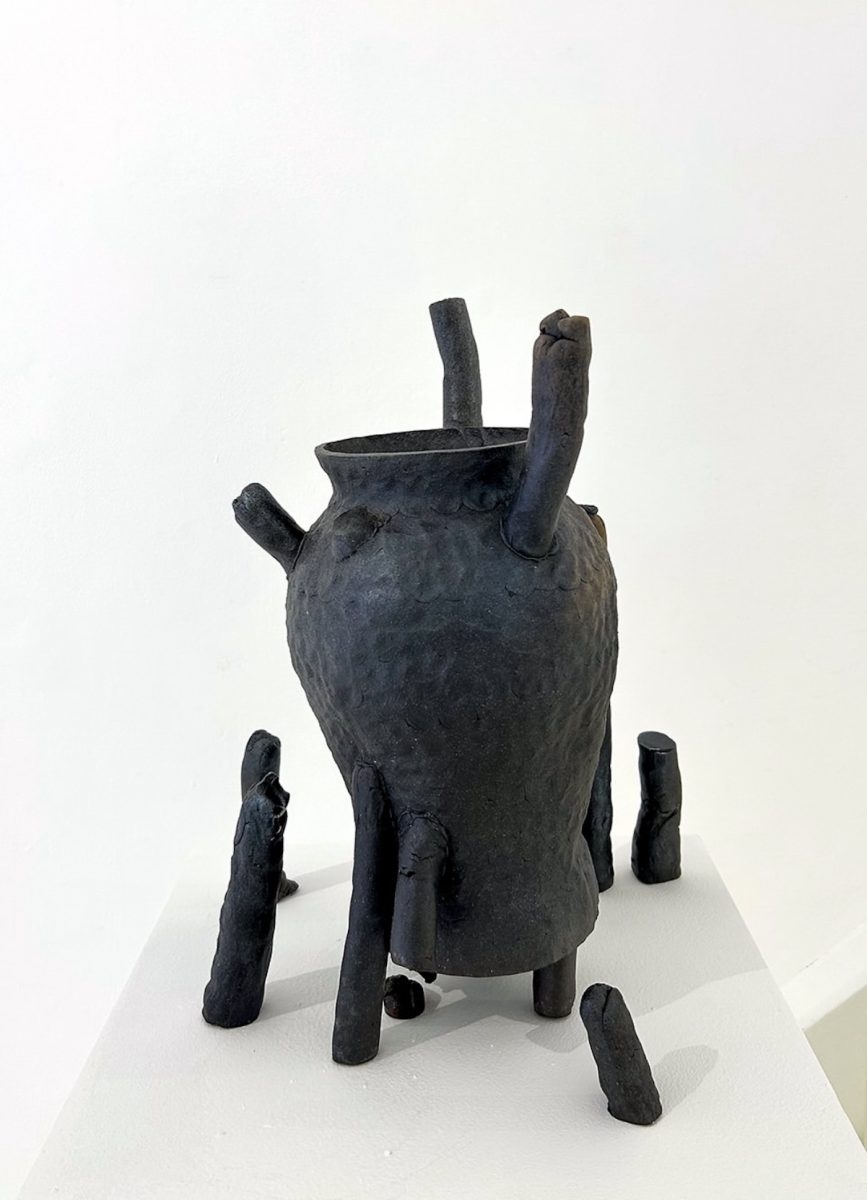
If the boundaries between geographies also imply boundaries between cultures, Toni de Jesus’s porcelain and clay works respond by emphasizing instability and fragility. Their delicate supporting structures connect and at the same time disrupt these boundaries. The decorative and fragile qualities of his works reflect the continuity of cultural identity and handcrafted tradition. Together, the two artists pose a crucial question. Geography does not merely extend across the surface of the earth; it is also internalized within the strata of the body and the material world.
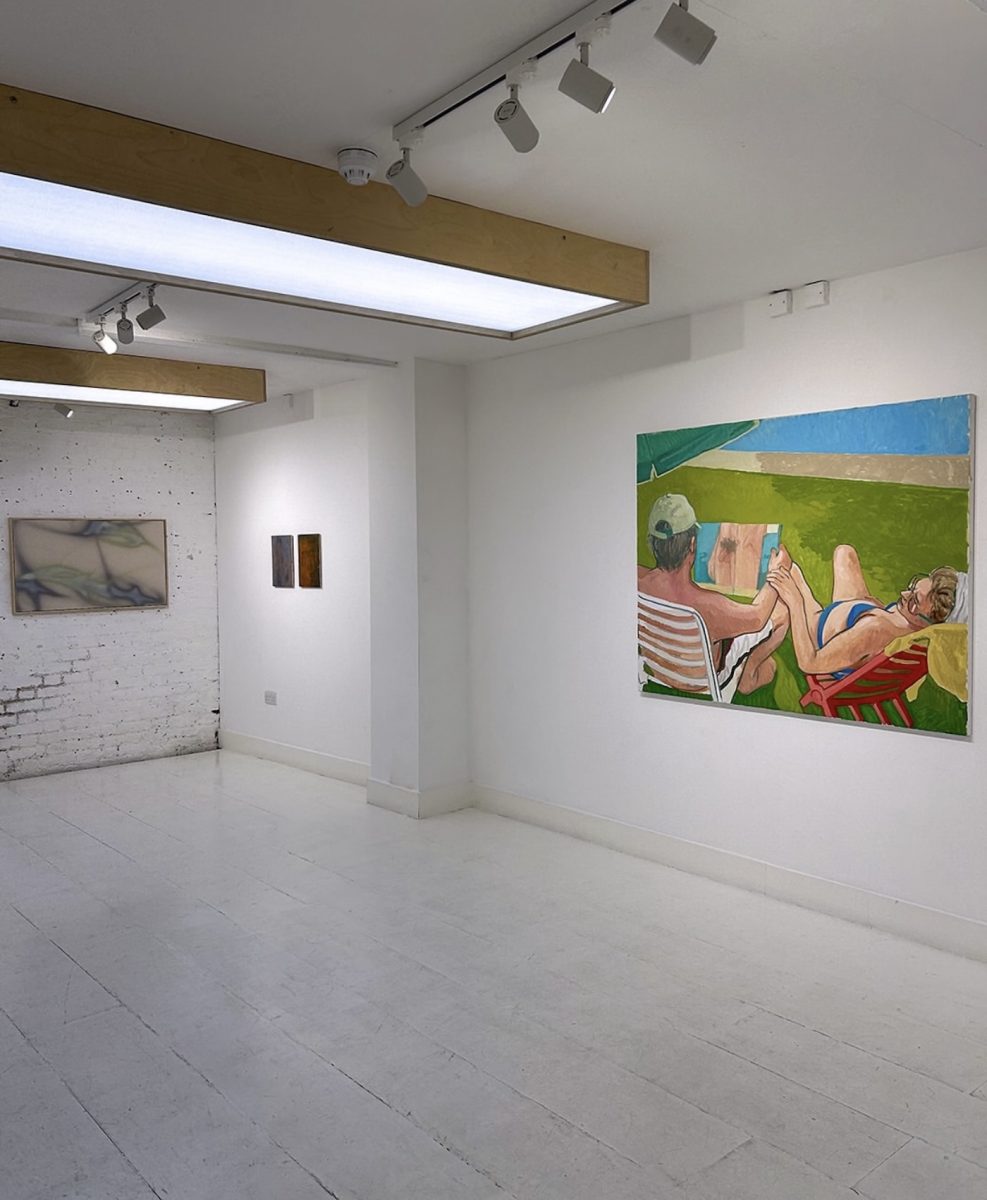
The lower level unfolds in a mode of resonance and return. At the stairway, Scott-Engel’s work reappears and functions as a transitional interface between the two floors, bringing us once again back to the human self. Upon descending, Woolner’s works darken in tone and become denser in structure, shifting from physiological forms to geological cross-sections. Cameron’s urban scenes appear again, and an ordinary restaurant kitchen becomes an exercise in the distance of seeing. Beside him, Afonso Rocha’s paintings combine classical and popular imagery and reinterpret traditional compositions to create new meanings. Here, time is treated as a visualized geography. Works by Dupuy and Scott-Engel appear once more, while De Jesus’s ceramic sculptures at the end form a breathing, cyclical structure.
Viewed as a whole, New Geographies builds its curatorial logic upon the proposition of “the internalization of geography.” Rather than being organized through thematic narrative or stylistic classification, the exhibition unfolds through the viewer’s path of movement: from city to body, from perception to materiality, from the external world back to personal experience. The relationships among the works are continuous rather than contrastive, they collectively form a field of research into spatial perception.
At first glance, New Geographies seems to narrate a map composed of people, spaces, and memories. Yet in essence, it offers a multidimensional meditation on what constitutes our existence within the environment. What truly constructs our world? Is it the reality that lies beneath hearing, seeing, and touch, or the manifestation of an energy that underlies all these senses? Perhaps by the time we complete the journey through the exhibition, we too have participated in the re-creation of “geography.”
New Geographies, 7th October – 19th October 2024 THE TAGLI
All images © The Tagli
CategoriesTagsAuthor
A Chinese artist and writer based in London, graduated from the Royal College of Art. Her practice is deeply rooted in spiritual discipline, spanning painting and writing. Each piece is a quiet voice from the soul — a way of living in the present moment, and an act of inner cultivation. She believes that every artist’s work is a manifestation of present energy, and that art is a bridge to the deepest parts of the soul.
